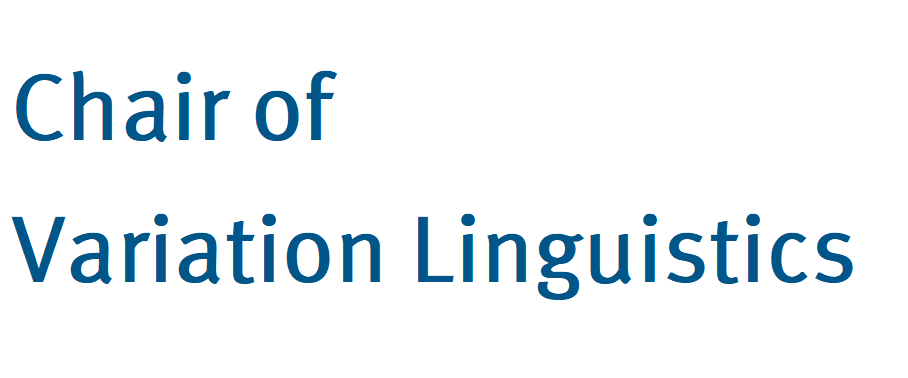



TRANSLOCALITY IN THE ANGLOPHONE CARIBBEAN II: SOCIOPHONETIC VARIATION AND PERCEPTION
While research on standard varieties of English has traditionally concentrated on the national level, in recent years, the focus has been increasingly also on transnational phenomena of English in today’s times of globalisation. However, those levels that are located in between the nation state and the global level are still rarely considered. Using the concept of translocality, the second phase of this project funded by the Deutsche Forschungsgemeinschaft (DFG, German Research Foundation - DE 2324/1-2; PI: Prof. Dr. Dagmar Deuber) is devoted to standards of English in the anglophone Caribbean on all of these spatial levels: It analyses language use in the context of educational institutions in three Eastern Caribbean states (Trinidad & Tobago, Grenada and Dominica) with regard to national and regional standardisation processes as well as global influences such as from American English. However, it also considers subregional (subregions inside the anglophone Caribbean) and subnational (town vs. country) aspects as well as the interaction of factors related to the different spatial levels.


SOCIOPHONETIC VARIATION
The central object of empirical investigation is sociophonetic variation. Data collected in the first phase of the project from Dominican, Grenadian, and Trinidadian students and teachers (reading passages, word lists and meta-linguistic interviews) are analysed with regard to vocalic, consonantal, and prosodic aspects using a combination of acoustic and auditory methods. The aim is to describe similarities and differences within and between the selected territories, while taking into account language-internal and sociolinguistic variation. Based on data from more than 200 speakers, the project thus performs the first context-specific cross-national phonetic analysis of Standard English in the Caribbean.
For the acoustic vowel analyses, a tool for automatic forced alignment and vowel formant estimation specifically calibrated to Trinidadian English is used (TRINI-FAVE; Meer & Matute Flores, 2018). TRINI-FAVE is also adapted for further Caribbean varieties of English and allows for large-scale automated analyses of tens to hundreds of thousands of vowels and speakers’ entire vowel spaces. Both target-oriented as well as dynamic acoustic analyses of vowels are carried out, i.e. analyses focusing on both specific acoustic targets as well as time-varying acoustic information (such as spectral (rate) of change).

Several consonantal features are investigated using a combination of acoustic and auditory methods: the retraction of /s(tr)/, /tr/-affrication, rhoticity, TH-stopping, /t,d/ coda cluster reduction, and nasals in the DOWN set. The retraction of /s(tr)/ focuses on a large-scale automated acoustic analysis of the first spectral moment of all sibilants produced by all speakers. /tr/-affrication is analysed auditorily in conjunction with an inspection of spectral moments and zero crossing rates. Rhoticity is examined perceptually and based on an analysis of the F2 and F3 formant track of the preceding vowel. All remaining features are investigated auditorily.
Variation in prosody is investigated in cooperation with Prof. Dr. Robert Fuchs at the University of Hamburg. Several prosodic aspects (inter alia, pitch level, pitch range, and pitch dynamism) are measured acoustically and compared to other (non-Caribbean) dialects of English.


PERCEPTION
The analysis of sociophonetic features is complemented by an investigation of the perception of oral language usage. An internet-based study tests in how far accents can be correctly assigned to the respective countries and subregions of origin inside the Caribbean. It follows up on an earlier investigation into the recognition of the national provenance of newscasters based on their accents by participants from the Caribbean (Hänsel & Deuber, 2019). In that study, the perception of people from the same country as the newscaster could not be considered as the participants often recognized the newscasters’ voices. In contrast, the present study uses stimuli of teachers from different anglophone Caribbean countries as less publicly known representatives of standard speakers. The selection of stimuli is based on the best possible comparability in terms of content and voice quality as well as on the occurrence of phonetic variables that display variation within the anglophone Caribbean. The purpose of the study is to identify in how far different Caribbean stimuli are perceived as similar or dissimilar as well as as local or not local and – to the extent possible – to determine the phonetic features that are relevant in this connection.

PUBLICATIONS RELATED TO THIS PROJECT
Meer, P. (in press). Variation and change in the NURSE vowel in Trinidadian English: An apparent-time analysis of adolescent and adult speakers. In T. Brato, S. Buschfeld, & M. Schmalz (Eds.), Acquisition and variation in World Englishes: Bridging paradigms and rethinking. Berlin/Boston: De Gruyter.
Meer, P., Fuchs, R., Deuber, D., Lacoste, V., & Hänsel, E. C. (in press). Prosodic variation of English in Dominica, Grenada, and Trinidad. World Englishes.
Meer, P., Brato, T., & Matute Flores, J. A. (2021). Extending automatic vowel formant extraction to New Englishes: A comparison of different methods. English World-Wide, 42(1), 54-84. https://doi.org/10.1075/eww.00060.mee
Meer, P., Fuchs, R. (2021). The Trini sing-song: Sociophonetic variation in Trinidadian English prosody and differences to other varieties. Language and Speech. Advance online publication. https://doi.org/10.1177/0023830921998404
Meer, P. (2020). Automatic alignment for New Englishes. Applying state-of-the-art aligners to Trinidadian English. The Journal of the Acoustical Society of America, 147(4), 2283-2294. https://doi.org/10.1121/10.0001069
Ahlers, W., & Meer, P. (2019). Sibilant variation in New Englishes: A comparative sociophonetic study of Trinidadian and American English /s(tr)/-retraction. Proceedings of Interspeech, 291–295. https://doi.org/10.21437/Interspeech.2019-1821
Hänsel, E. C., & Deuber, D. (2019). The interplay of the national, regional, and global in standards of English: A recognition survey of newscaster accents in the Caribbean. English World-Wide, 40(3), 241-268. https://doi.org/10.1075/eww.00031.han
Meer, P., & Fuchs, R. (2019). Pitch level, range, and dynamism in Trinidadian English: A comparative study with other varieties of English. Proceedings of the International Congress of Phonetic Sciences (ICPhS), 329–333.
Meer, P., & Matute Flores, J. A. (2018). Making FAVE ready for New Englishes: Applying and modifying FAVE for semi-automatic acoustic analyses of Trinidadian English vowels, NWAV 47, New York: New York University.


